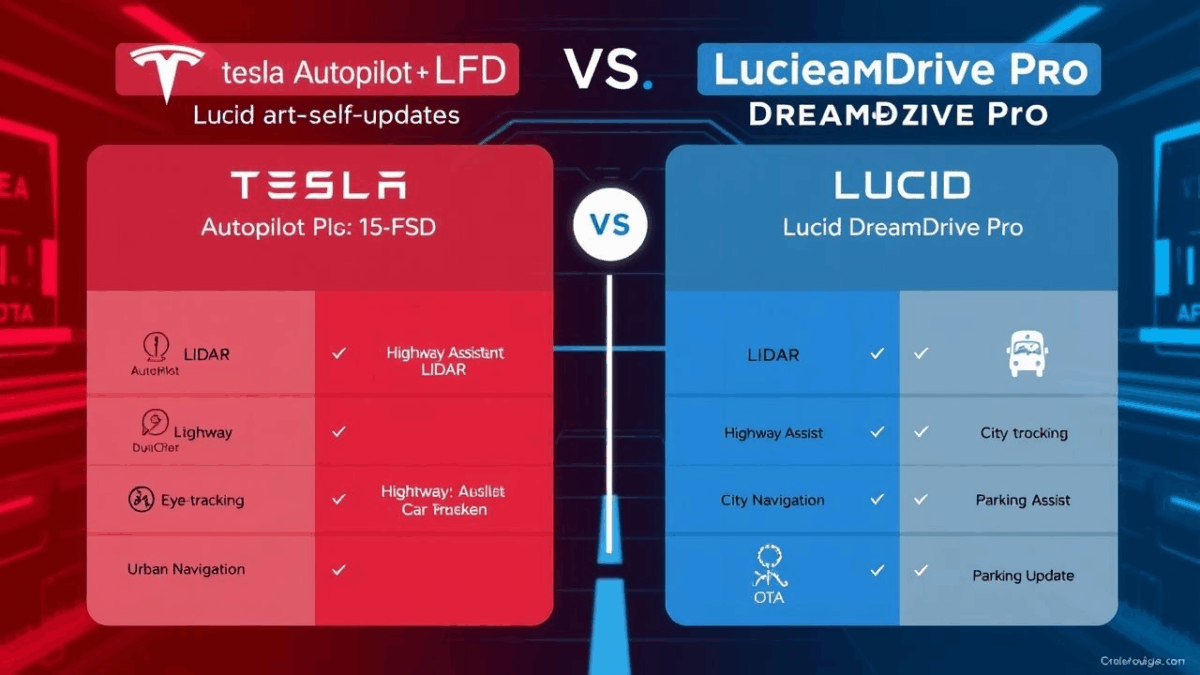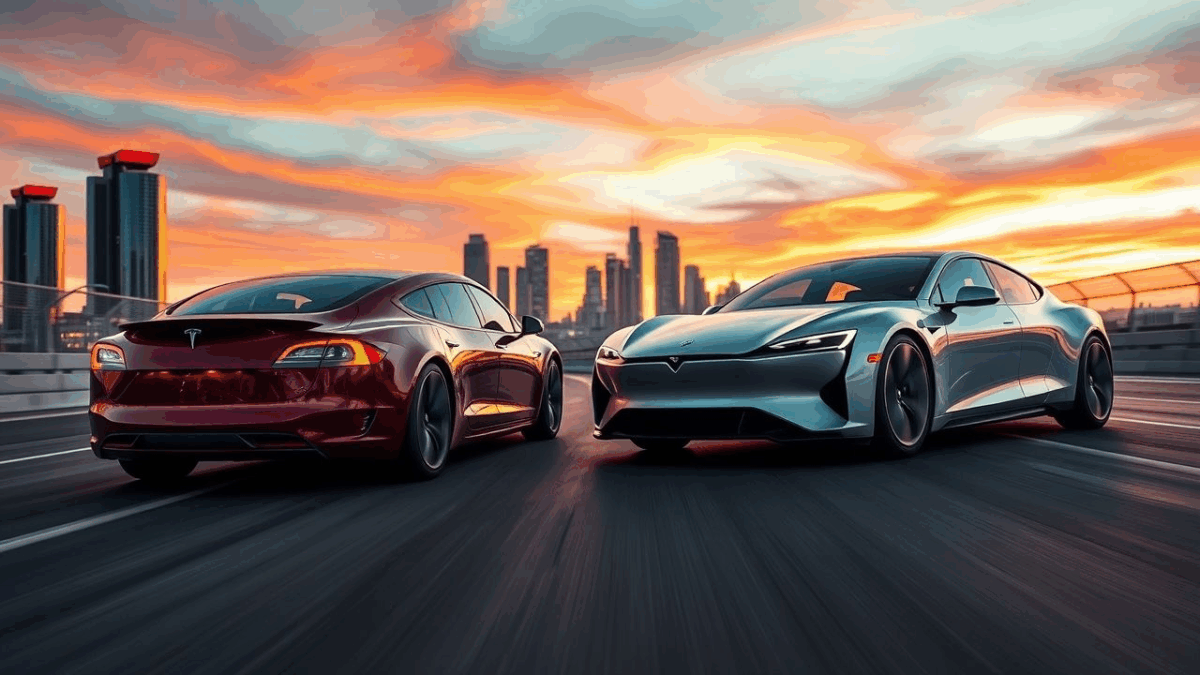Self-driving tech is no longer science fiction — it’s now a key feature buyers look for when choosing a premium EV. Two of the most advanced systems on the road today are Tesla Autopilot (with optional Full Self-Driving) and Lucid DreamDrive Pro.
But which one is truly smarter in 2025? If you’re shopping for a next-gen electric car, this head-to-head breakdown of Tesla vs Lucid’s autonomous features will help you decide.
What Is Tesla Autopilot and FSD?
Tesla Autopilot is a suite of advanced driver-assistance features that come standard with all new Teslas. It includes:
- Adaptive cruise control
- Lane centering
- Autosteer
- Emergency braking
- Auto lane changes (with Enhanced Autopilot)
- Navigate on Autopilot (FSD package)
Tesla’s optional Full Self-Driving (FSD) adds even more power:
- Traffic light and stop sign control
- Autopark
- Summon
- Beta-level city street driving (with ongoing updates)
The Tesla network collects real-time driving data from millions of vehicles, giving its system unmatched learning potential.
What Is Lucid DreamDrive and DreamDrive Pro?
Lucid’s DreamDrive is the brand’s advanced driver-assistance platform, and the upgraded DreamDrive Pro adds even more futuristic features, including:
- 32 onboard sensors (cameras, radar, LiDAR, ultrasonic)
- Eye-tracking for driver attention
- Highway assist
- Lane centering and lane change assist
- Auto-park and traffic jam assist
- OTA (Over-the-Air) update support
Lucid is the first U.S. automaker to include LiDAR in a production vehicle, giving it a high-precision edge in mapping and object detection.
Feature Comparison: Tesla Autopilot vs Lucid DreamDrive
| Feature | Tesla Autopilot + FSD | Lucid DreamDrive Pro |
|---|---|---|
| Highway Driving Assist | ✅ Yes | ✅ Yes |
| City Street Navigation | ⚠️ Beta (with FSD) | ❌ Planned |
| LiDAR Support | ❌ No | ✅ Yes |
| Eye-Tracking | ❌ No | ✅ Yes |
| OTA Updates | ✅ Yes | ✅ Yes |
| Parking Assist | ✅ Yes | ✅ Yes |
| Price | $12,000 (FSD add-on) | Included in higher trims |
Verdict:
- Tesla leads in real-world autonomous driving features thanks to its years of data collection and the FSD beta.
- Lucid offers greater sensor sophistication and driver monitoring, positioning it well for future autonomy.

Insurance for Semi-Autonomous Cars: What to Expect in 2025
Cars equipped with advanced driver-assistance systems (ADAS) — like Tesla Autopilot and Lucid DreamDrive — often see different insurance rates compared to traditional vehicles. While these systems can reduce accidents, repair costs and tech complexity raise premiums.
Key insurance considerations:
- Coverage for sensors and cameras: Repairs can be expensive if ADAS hardware is damaged.
- Premiums based on system use: Some insurers now use telematics to track how often features like Autopilot are engaged.
- Discounts for advanced safety tech: Some companies offer EV-specific and ADAS-based discounts.
⚡ Pro Tip for EV Owners: Use comparison tools like The Zebra, Policygenius, or Insurify to get quotes from top providers offering EV and ADAS coverage. This could save you hundreds each year.
Real-World Use: Which One Feels Smarter?
- Tesla Autopilot is seamless on highways, but FSD city driving is still in beta and can be unpredictable.
- Lucid DreamDrive Pro feels smoother and more “aware” thanks to LiDAR and eye-tracking, but it’s currently limited to highway and parking use.
In terms of user experience, Tesla’s software feels faster and more integrated. Lucid counters with safety-first design and rich sensor data that should scale well in future updates.

OTA Updates: Who’s Innovating Faster?
Both Tesla and Lucid offer over-the-air updates that continuously improve their systems.
- Tesla updates are frequent and sometimes major (e.g., driving behavior changes, UI overhauls).
- Lucid updates are more cautious, but they emphasize stability and refinement.
If you’re the kind of driver who enjoys early access to new features, Tesla FSD Beta offers a more bleeding-edge experience. If you prefer stability and safety, Lucid’s DreamDrive Pro may feel more reassuring.
Final Verdict: Which Is Smarter in 2025?
- Tesla Autopilot + FSD is more aggressive in pushing toward full autonomy, making it a leader in hands-free capabilities (with some risk).
- Lucid DreamDrive Pro is smarter in its sensor suite and safety protocols, but it’s currently more conservative in application.
So, which should you choose?
- Choose Tesla Autopilot if you want the most advanced semi-autonomous experience right now.
- Choose Lucid DreamDrive if you value sensor-rich safety, smoother driving, and long-term innovation.



